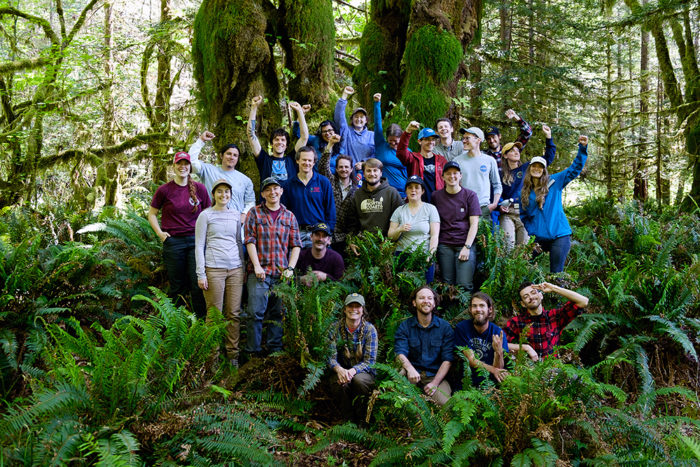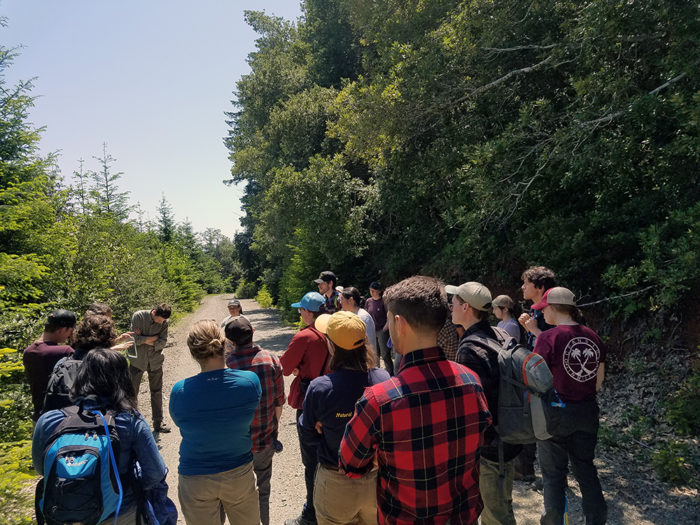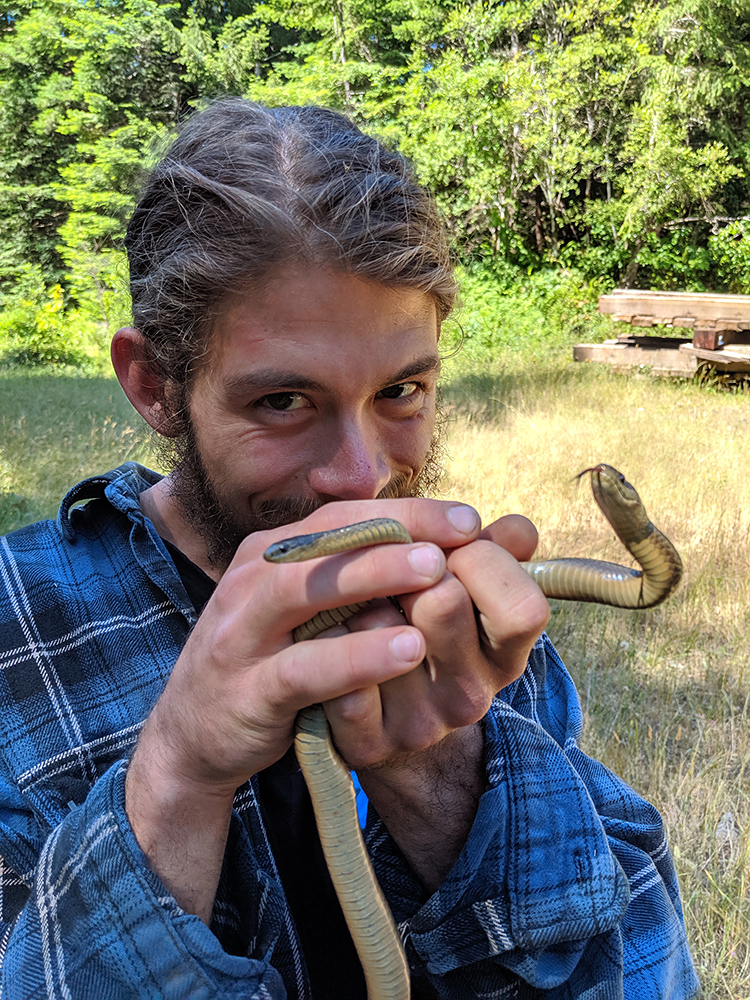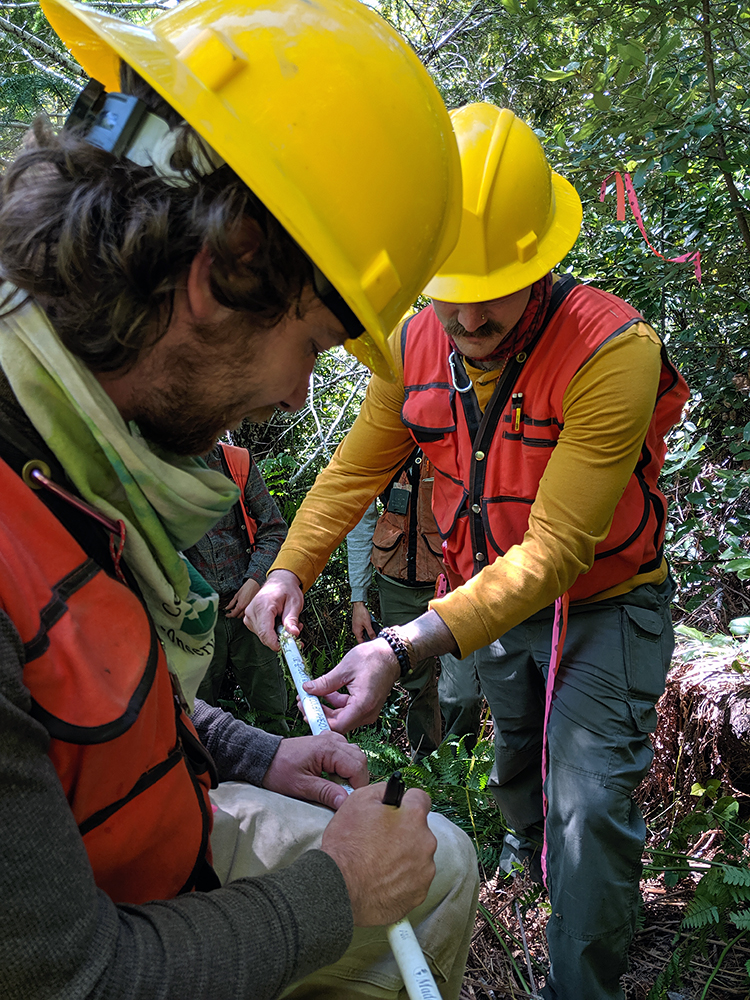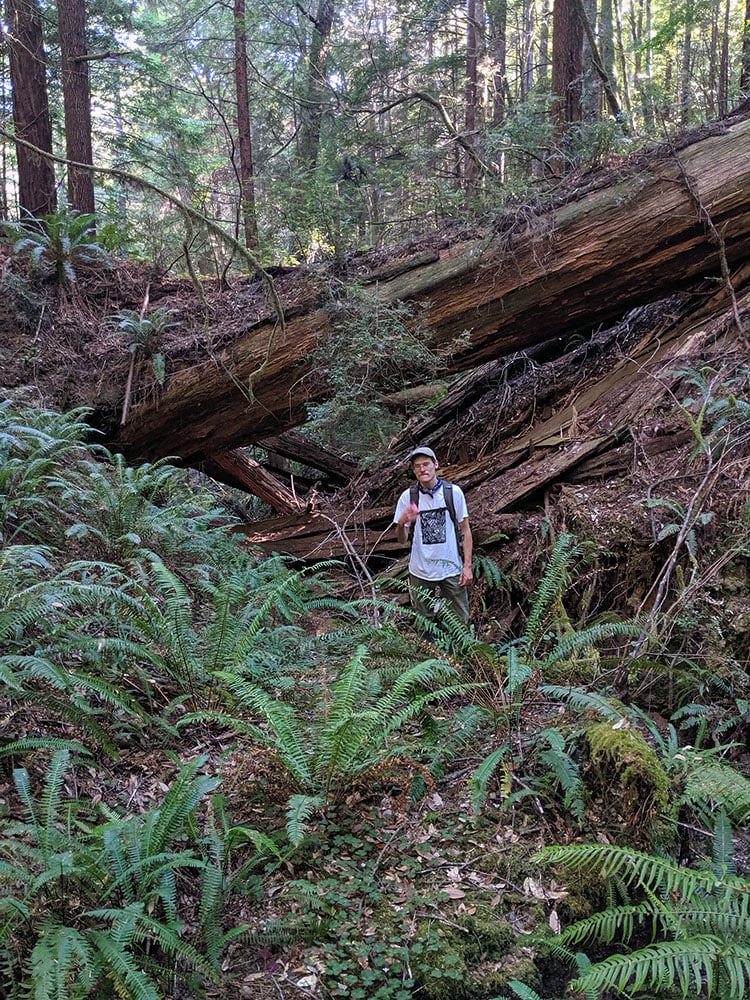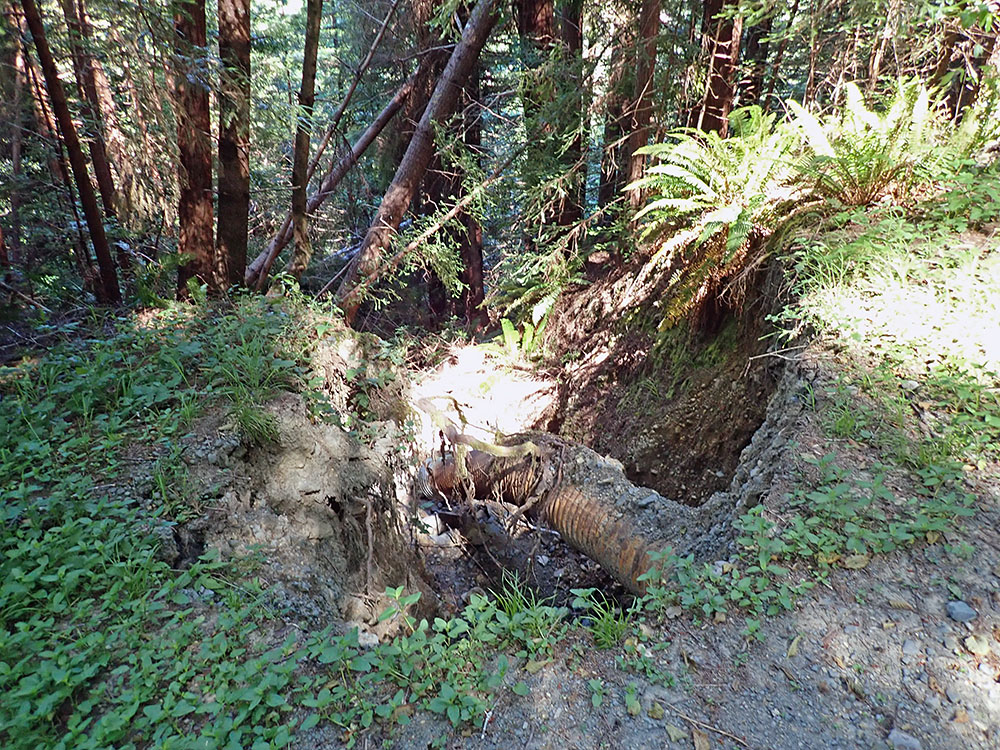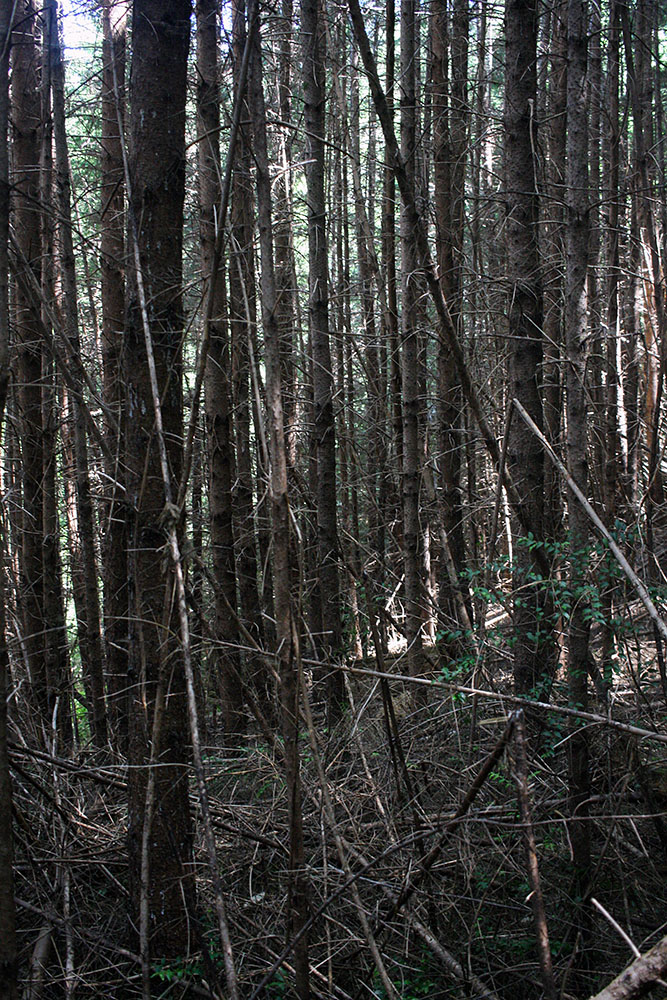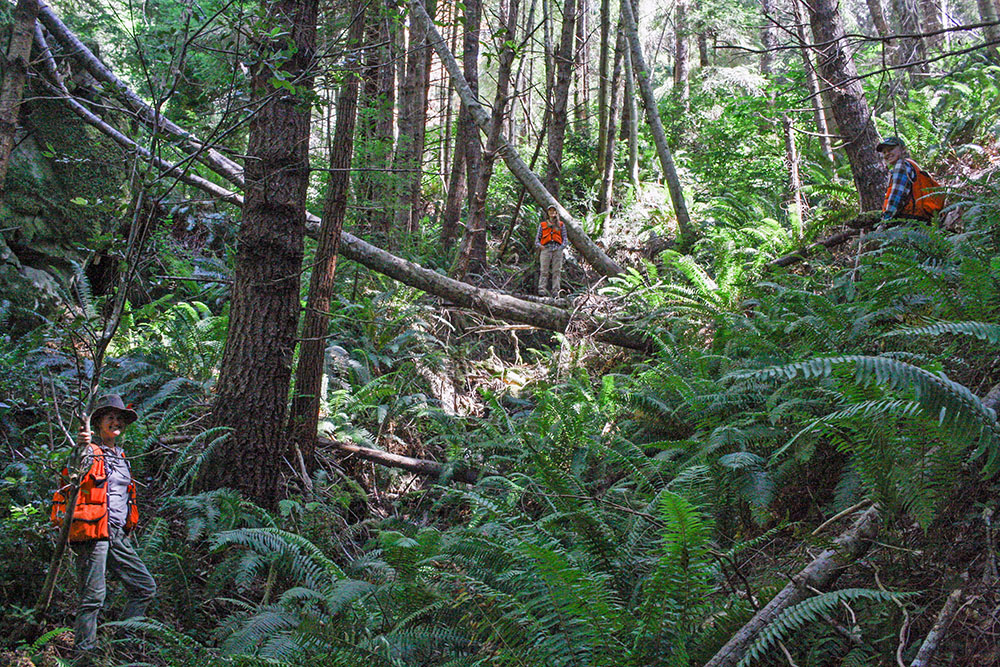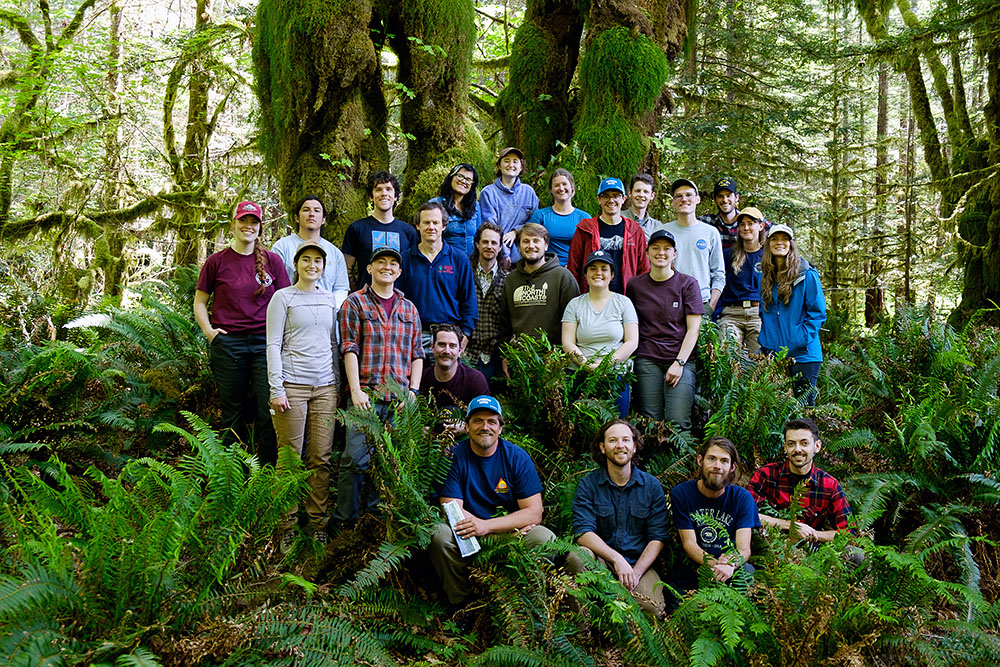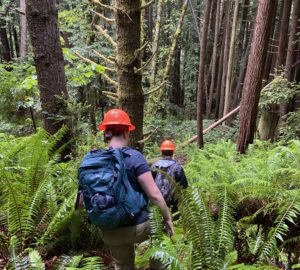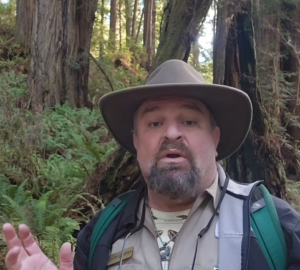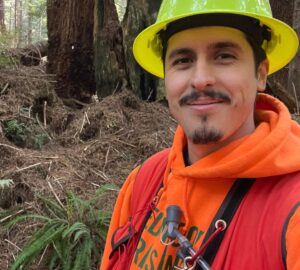The Redwoods Rising Apprenticeship is a summer program for Humboldt State University undergraduate students seeking to gain experience in natural resource management. These students get to work directly with career resource management professionals at Redwood National and State Parks (RNSP), and gain valuable experiences that will help jumpstart their careers and enrich their lives.
As the manager of the Redwoods Rising Apprenticeship program, I don’t get out in the field very often, but I get to see growth in the apprentices in snapshots. It’s remarkable to me how a short 11 weeks can contribute to a young person’s life. I’m so grateful that I can help to provide an invaluable experience to people only just beginning their careers. I get to cover all of the logistics and coordination of splitting up the eight field crews between our partners at California State Parks and National Park Service during the field season. It’s enough to make my head spin at times, but when everything settles, I find myself humbled and reminded of how lucky I am to work alongside the incredible staff at RNSP. In every interaction I have with our partner staff, I learn something new about the ecology or history of these redwood forests.
Unlike the superlative old-growth stands iconic to RNSP, a majority of the parks have been cut over for timber extraction, multiple times in some places. These landscapes bear literal scars of resource extraction. Slopes remain crisscrossed with logging roads left to waste away into streams, and stands of aerially reseeded trees grow tall and spindly. Overall we see a vulnerable system in need of care. Despite the fact that these apprentices and I will never see the end result of our efforts, the need for action is clear. We see unstable trees that have grown meters in height over five years without adding anything to their girth; culverts left to waste by logging companies; streams buried by enough sediment to fill a small house.
One of my favorite days I spent with the apprentices was on a field tour of the Lost Man Creek watershed in Redwood National Park. Since 1978, Redwood National Park has been conducting studies and restoration treatments in this watershed. Apprentices were able to see slopes and streams put back to their original form after road removal, and forests rebounding after thinning prescriptions, with measured improvements in tree growth and understory diversity. The excitement of seeing all elements of forest restoration coming together was incredibly gratifying.
At the end of the field season, I was able to accompany the same crew from one of those first days at Mill Creek. I was impressed by their confidence. The same apprentices who were apologizing for their pace at the beginning of the term were offering to barrel down into a drainage to get a closer look at a point of interest. They got their forest legs, and so much more.
Learn more about Redwoods Rising and the critical work we’re doing with the National Park Service and California State Parks to greatly accelerate the pace of redwood forest recovery in Redwood National and State Parks.
